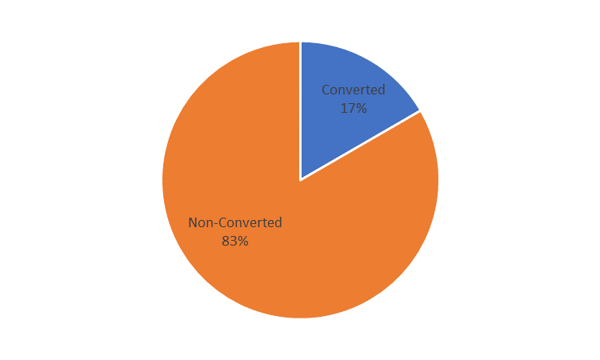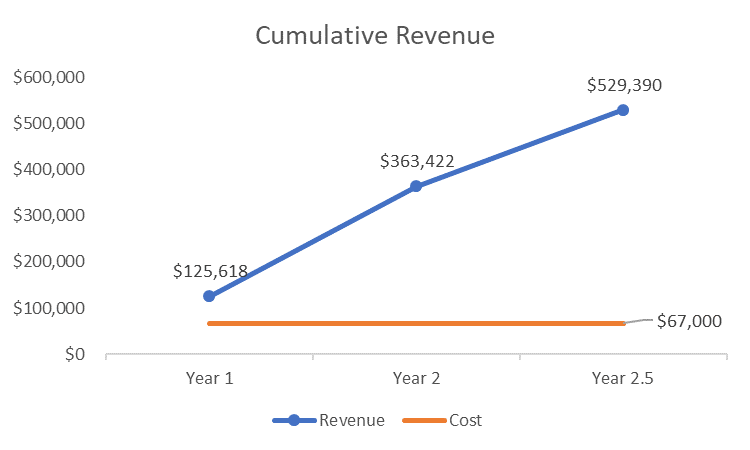For nonprofit organizations on the front lines of the COVID-19 pandemic – food banks, rescue missions and hospitals, for example – donations have poured in as people look for any way they can help. But one big question so many of our clients have asked is this: What should we do with first-time donors who gave during this pandemic?
In this article, we’re sharing some tactics that nonprofit organizations (NPOs) can use to engage with this new group of disaster donors and convert them to become mission-focused donors. We’ll also look at how a food bank handled this during a recent disaster and how that translates to today.
UNDERSTANDING DISASTER DONORS
The global pandemic has shined a spotlight on nonprofit organizations. And NPOs have responded with extraordinary grace during this time of difficulty, earning back trust from a skeptical public.
People across the globe have expressed their appreciation through a level of generosity that has been truly inspirational. So many organizations have seen record-breaking giving, smashing through established goals and bringing additional hope to the sector.
An increase in donors is never a bad thing, but we know that retaining disaster donors once the crisis has passed can prove to be a challenge.
We know NPOs typically go through a three-year cycle following a disaster. In Year 1, they see a dramatic influx of new donors and a rise in gifts. In Year 2, they see declines in revenue, active donors and retention rate as the file begins to normalize. In Year 3, percentages bounce back up to account for a return to pre-disaster trends.
How can we get more disaster donors to stick around in Year 2 and beyond?
Through the use of data and analytics, we’ve made three key observations about disaster donors over the years:
- They typically give out of immediate emotion
- They may live outside your service area
- They often have a low retention rate
We’ve used this knowledge to create a strategic approach to disaster donors that can be applied to the new COVID donors that organizations are seeing.
SEGMENTATION AND MESSAGING
With some careful segmentation and messaging crafted specifically for disaster donors, you can convert these donors into long-term supporters of your mission.
As new COVID donors come through your files, the first step we recommend is coding them as such and keeping them that way until they behave differently. Then, you should take the following steps:
- Create messaging that details the difference their gift is making
- Link the impact to your mission to further the relationship
- Provide periodic updates on the work you’re doing during the pandemic
- Add COVID donors to your media targeting
- Ask for a second gift within 60 days of the first donation
You’d be surprised how many donors are willing to give more once they know how their donation is helping you fulfill your mission. Remind them of their previous support and the impact it made, and you’ll begin to convert these donors to your mission.
After all your work cultivating these donors, it’s time to take a second look. How has their behavior changed? We see three primary segmenting options here:
Move them to your active donor file. If they’ve made a second gift, it’s time to transition these donors into your active file. Based on the commitment they’ve shown, they are interested in your mission, and you can continue cultivating this relationship.
Add them to a lapsed donor campaign. Are they failing to respond to your second-gift asks but still opening your emails? Are they engaging with your social media posts? Treat them as warm prospects. Be sure to stick to the channel in which they made their gift during the pandemic.
Set aside as a disaster donor. If they’ve shown no signs of interest after 13-15 months (including an anniversary reminder message), they should remain in the disaster donor segment. But this group still has great value! Continue to engage them with targeted intentional messaging and call on them whenever another emergency arrives.
Don’t write off COVID donors as one-time givers. It’s possible to convert new donors during this pandemic. By segmenting these donors and tapping into the emotion that led them to give to drive copy and creative, you can form a lasting relationship between COVID donors and your organization.
PUTTING THE PLAN IN ACTION
In order to get an idea of what this might look like in action, we analyzed donors acquired by the Houston Food Bank during the aftermath of Hurricane Harvey in August 2017. While hurricanes are not quite the same as pandemics, Harvey makes for a model comparison due to the scale of the devastation and the widespread, long-lasting impact it had on the entire community.
In response to this disaster, Houston Food Bank saw a dramatic influx of new donors, much like many nonprofits nationwide are seeing during the COVID-19 pandemic.
RKD worked with Houston Food Bank to develop a 16-month strategic, multichannel communication plan to acknowledge, steward and solicit these donors through December 2018. As mentioned above, timing is key in communications.
This was true for Houston Food Bank, and we can see it in when disasters donors converted to mission-based donors. Breaking down the converted donors, 30% made another gift (non-disaster-related) within the first three months of their first gift. Another 28% made a second gift 10-15 months after the first gift (in the time range of anniversary reminders).
Of the 6,701 new donors acquired for Hurricane Harvey in the Houston Food Bank market area, 1,116 (17%) of them converted with an additional gift to the food bank outside of their hurricane donations. The conversion rate for disaster donors often sits between 10% and 20%. Creating a targeted communication program pushes that rate closer to 20%, so it’s clear that the investment pays off.

Here’s a snapshot of the results:
- $53,500 spent on acquisition during the disaster
- $13,500 spent on cultivating new disaster donors
- 17% of donors converted to mission
- $529,390 in revenue after 2.5 years (excluding first gift)
- 9 times ROI for disaster donors

While many COVID donors will lapse once the emergency passes, it is possible to convert some of them. Focus on acknowledgement and stewardship first before soliciting for another gift and the investment will pay off.





Leave a comment: